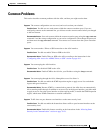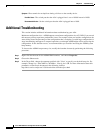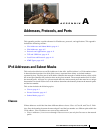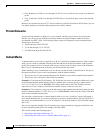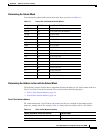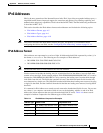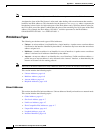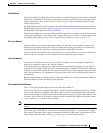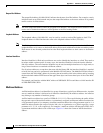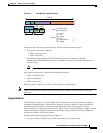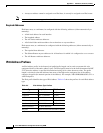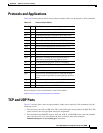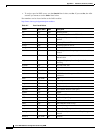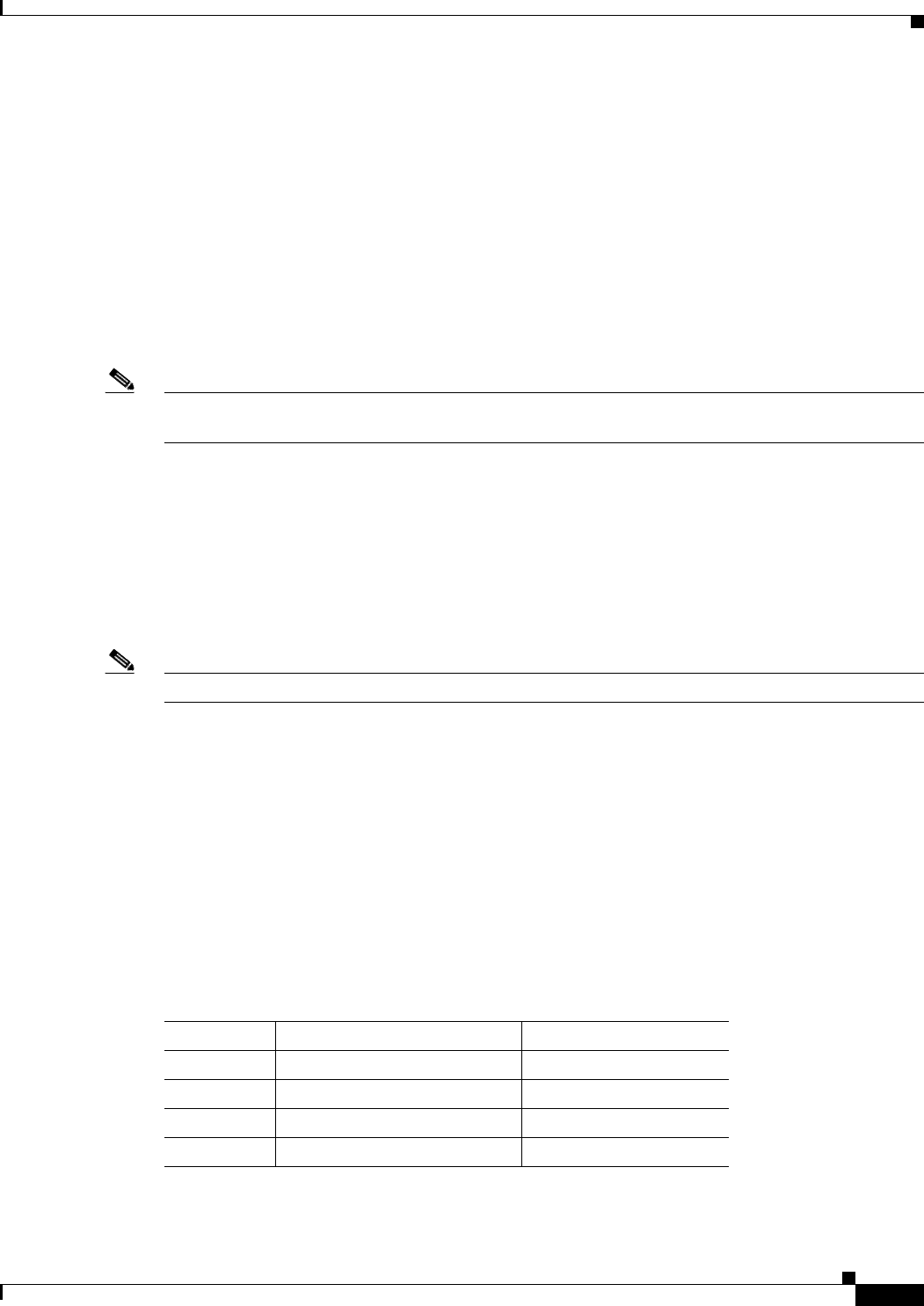
A-5
Cisco ASA 5500 Series Configuration Guide using ASDM
Appendix A Addresses, Protocols, and Ports
IPv6 Addresses
IPv6 Addresses
IPv6 is the next generation of the Internet Protocol after IPv4. It provides an expanded address space, a
simplified header format, improved support for extensions and options, flow labeling capability, and
authentication and privacy capabilities. IPv6 is described in RFC 2460. The IPv6 addressing architecture
is described in RFC 3513.
This section describes the IPv6 address format and architecture and includes the following topics:
• IPv6 Address Format, page A-5
• IPv6 Address Types, page A-6
• IPv6 Address Prefixes, page A-10
Note This section describes the IPv6 address format, the types, and prefixes. For information about
configuring the ASA to use IPv6, see the “Configuring IPv6 Addressing” section on page 14-14
IPv6 Address Format
IPv6 addresses are represented as a series of eight 16-bit hexadecimal fields separated by colons (:) in
the format: x:x:x:x:x:x:x:x. The following are two examples of IPv6 addresses:
• 2001:0DB8:7654:3210:FEDC:BA98:7654:3210
• 2001:0DB8:0000:0000:0008:0800:200C:417A
Note The hexadecimal letters in IPv6 addresses are not case-sensitive.
You do not need to include the leading zeros in an individual field of the address, but each field must
contain at least one digit. So the example address 2001:0DB8:0000:0000:0008:0800:200C:417A can be
shortened to 2001:0DB8:0:0:8:800:200C:417A by removing the leading zeros from the third through
sixth fields from the left. The fields that contained all zeros (the third and fourth fields from the left)
were shortened to a single zero. The fifth field from the left had the three leading zeros removed, leaving
a single 8 in that field, and the sixth field from the left had the one leading zero removed, leaving 800 in
that field.
It is common for IPv6 addresses to contain several consecutive hexadecimal fields of zeros. You can use
two colons (::) to compress consecutive fields of zeros at the beginning, middle, or end of an IPv6
address (the colons represent the successive hexadecimal fields of zeros). Table A-4 shows several
examples of address compression for different types of IPv6 address.
Table A-4 IPv6 Address Compression Examples
Address Type Standard Form Compressed Form
Unicast 2001:0DB8:0:0:0:BA98:0:3210 2001:0DB8::BA98:0:3210
Multicast FF01:0:0:0:0:0:0:101 FF01::101
Loopback 0:0:0:0:0:0:0:1 ::1
Unspecified 0:0:0:0:0:0:0:0 ::



